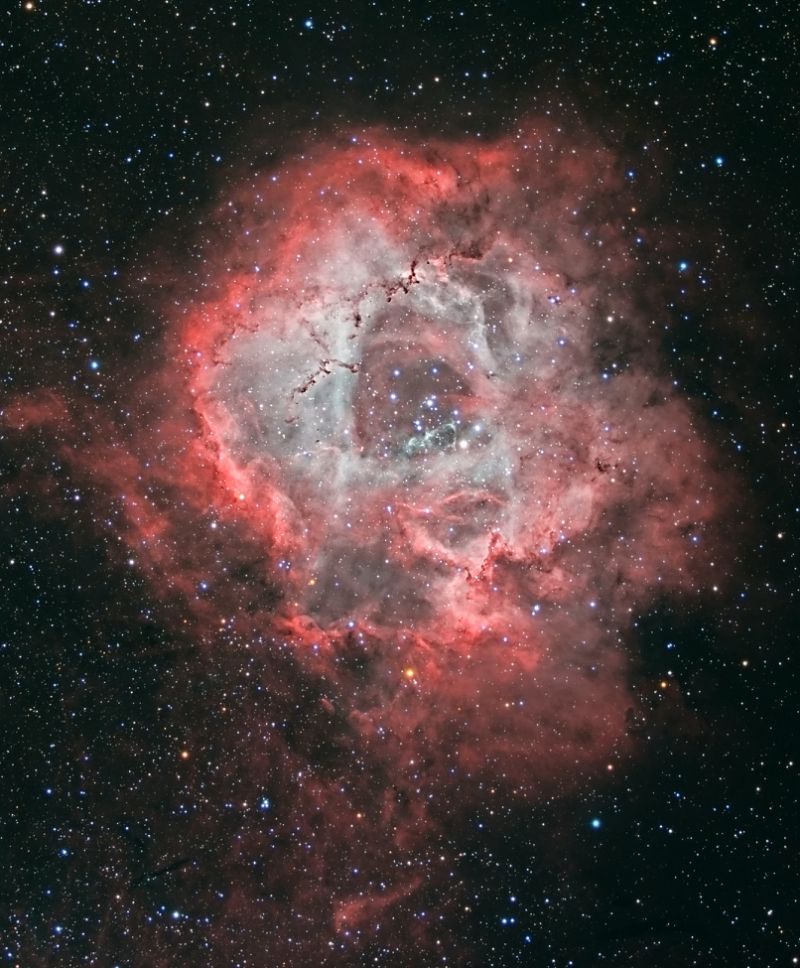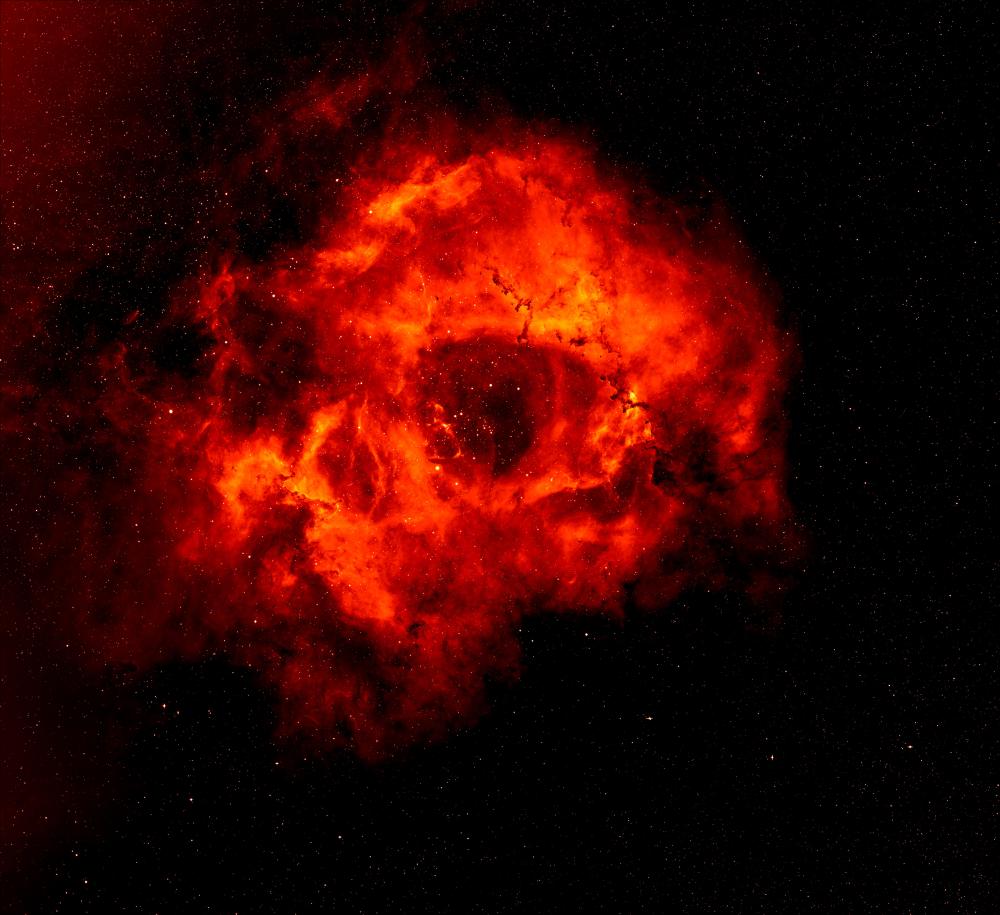
For five nights, the skies above Jean Dean's home were dark and clear. Here in her backyard, on the remote Channel Island of Guernsey, the 60-year-old grandmother and retired oceanographer was taking part in a star-gazing course.
Whatever she saw up there was too beautiful not to capture. Using 13 hours of exposure, the amateur astronomer snapped a photo of the Rosette Nebula, a massive interstellar dust cloud 5,000 light years away.
It's now been featured by NASA a part of a collection of the best astrophotography images.
Run by NASA and Michigan Technological University, the Astronomy Picture of the Day, or APOD, is a daily resource providing beautiful, interesting and fascinating space images, along with a small blurb from an astronomer.
 (Jean Dean/SWNS.COM)
(Jean Dean/SWNS.COM)
After being nagged by a friend, Dean submitted the final product to NASA. On April 12, just hours before appearing on the official space agency website, Dean received an email telling her she was going to be featured.
"As an amateur, to have an image picked for an APOD is a great honour and it was a marvellous surprise," she told the Guernsey Press.
A member of La Societe Guernesiaise Astronomy Section (or the Guernsey Astronomy Society), Dean has had a passion for star-gazing since she was a child, in part because of her remote upbringing, which is usually pretty dark at night.
In other words, it's the perfect place to take a prize-winning photograph of the night sky.
The Rosette Nebula is roughly five times the size of the Full Moon in the night sky. And it's a sight to behold – often compared to a skull, this image makes it look more like a beautiful red flower.
 (Data from the INT Photometric H-Alpha Survey of the Northern Galactic Plane, prepared by Nick Wright/University College London/IPHAS Collaboration)
(Data from the INT Photometric H-Alpha Survey of the Northern Galactic Plane, prepared by Nick Wright/University College London/IPHAS Collaboration)
On the APOD site, next to the photograph, the authors explain that "the petals of this cosmic rose" are actually a massive stellar nursery, home to thousands of budding young stars only a few million years of age.
The pistil in the very center is the result of some very hot young stars, each of which exert a temperature so great it keeps the rest of the dust at bay.
"These regions are called giant molecular clouds and are very important as they are the birthplace of new stars which leads to the creation of the solar systems with planets and moons and the possibility of life," explained Dean.
"I encourage anyone to come up here and have a look, we're trying to encourage people to look up at the skies more."
Dean dedicated the image to the same friend who suggested she enter and who recently passed away.
Thanks for sharing this nice article. It really help me.
ReplyDeleteTo know more about Trading School Visit:
How to invest in stocks
Best stocks to buy
Trading academy online